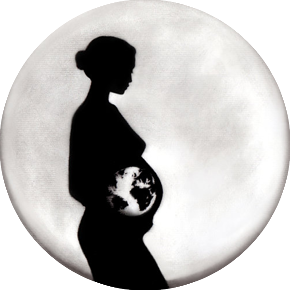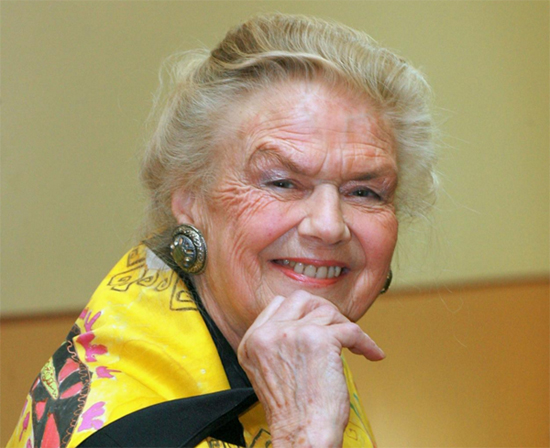Technological vs Traditional: A Striking Look at How Childbirth is Shaped By Culture

 This is a special excerpt from the new autobiography of internationally renowned childbirth educator and anthropologist Sheila Kitzinger, finished shortly before her death in April 2015. Find out more about the book at the bottom of this post.
This is a special excerpt from the new autobiography of internationally renowned childbirth educator and anthropologist Sheila Kitzinger, finished shortly before her death in April 2015. Find out more about the book at the bottom of this post.
A common picture of childbirth in primitive life is like that of anthropoid apes. It is wide of the mark. It is always shaped by culture.
In traditional cultures around the world divination and incantation is widely used. Hawaiian midwives, for instance, use magic spells to take the pain from the woman and an incantation gives it to an animal. In one birth I attended the pain was conveyed to a very lazy brother-in-law.
In Jamaica a woman who is having a difficult labour can be helped by the midwife if a sweaty undershirt belonging to the father of the child is put near her and she takes some good sniffs.
Then the baby is born speedily. Most births are without an acknowledged father, so the sweaty undershirt indicates that there must be a man around. This gives the mother a sense of security because it indicates the man is going to take paternal responsibility.
In Polynesia there is an incantation that midwives chant over a woman in labour, 'Now the living child, long cherished by the mother beneath her heart fills the gateway of life. There is room to pass safely through. The child slips downward, becomes visible, bursts forth.'
Just as there is ritual in traditional societies, there is ritual in modern hospitals.
In a high tech culture women must go to hospital. Visits are allowed under restricted circumstances. The woman is separated from her partner and he (or she) is in a dependent situation, not allowed to affect the treatment of her or the baby, and often heavily patronised.
In fact, a father usually has a humorous role and is supposed to be in a state of confusion and hopelessness.
In our technological birth culture obstetric incantation is when the doctor says, 'Don't bother your head. Leave this to us, woman.' Or 'Keep your hands away from my sterile field.'
The mother tends to be treated as if she were a sardine can and professionals open it to get at the contents. Technical terms are kept from her, and things said over her supine body which she is not supposed to understand. She may not be allowed access to her case records.
Virtue Baby Teaser
It would be incomprehensible in a traditional society for the baby not to be given to the mother. In a technological culture a woman is not so much a mother as a sick person. She is not responsible for her baby, and the coming together of her and the outcome of pregnancy is regulated by the hospital. In the United States, and throughout the world where American obstetrics have spread their influence responsibility is taken from both the father and the mother. They become virtually non-persons. The ideal patient is passive and trusting – one who doesn't interfere with hospital routine and is recorded on the case sheet as 'resting peacefully'.
Yes, there are women who wish to know very little and who don't want to make decisions or even be aware of their labour or delivery. I believe they should have the right to that kind of birth if this is what they want. But birth as a pathological disturbance has now become the norm.
Many women feel the need in and after birth to propitiate those around them. Bowlby suggests that men envy women's possibilities of creative achievement in and through their bodies. Hatred is projected onto women by society at large. How else can we explain 'routine' episiotomies and 'routine' use of forceps? By cutting the vagina a culture seeks to gain control over women's sexuality.
There is evidence that continuity of care and care-giving helps make birth a satisfying experience for mothers. A continuous relationship also contributes to a midwife's satisfaction with her work. Though shift work and being a member of a large team means that she can plan ahead, know what she will be doing this time next week, next month – even, perhaps next year – it fragments the midwifery experience, and all too often means that she feels trapped in a hierarchical and bureaucratic institution that regulates and controls her life, where she is just a cog in a machine. Because it denies her autonomy, and makes it difficult to give one-to-one care, it leaves her dissatisfied and frustrated.
Many women struggle to find a way through post-traumatic stress after birth. They suffer nightmares, flashbacks and panic attacks, and describe the birth as a kind of rape, played out over and over in their heads like a video tape that cannot be switched off. It is still not recognised that midwives, too, may suffer from post-traumatic stress. Birth can be emotionally mutilating, for them as well as mothers.
The essence of midwifery is a close relationship with women and their families as they pass through a major life transition. It is an exciting and awesome journey in which challenges are met, personalities revealed, and values explored. Midwives who have worked for many years in a hospital shift system may grasp the opportunity of switching to case-load practice because they are able to offer personal care. At first doubtful about it, and perhaps low in self-confidence, a new world opens up for them, and they use their midwifery skills with a fresh focus.
Being a midwife is not just what a caregiver does. It is who this person is. A midwife stands at the crossing-point of generations, embodying fundamental values in societies across the globe.
Adapted from A PASSION FOR BIRTH: My life: anthropology, family and feminism by Sheila Kitzinger
 Internationally renowned childbirth educator, anthropologist and feminist icon Sheila Kitzinger (1929–2015) was one of the most influential figures in the natural childbirth movement.
Internationally renowned childbirth educator, anthropologist and feminist icon Sheila Kitzinger (1929–2015) was one of the most influential figures in the natural childbirth movement.
In a pioneering career spanning more than 50 years she campaigned for and oversaw a radical change in maternity care, placing women's rights and choices at the very heart of childbirth. Her passion, research and knowledge of childbirth have had enormous impact on millions of women worldwide.
In her long-awaited autobiography finished shortly before her death in April 2015, Sheila speaks openly about her remarkable life and career. From childhood growing up with a feminist mother and her student days in Oxford, to her global anthropological and activist work and family life with husband Uwe and their five daughters, this is a fascinating insight into an extraordinary woman.
This fully illustrated autobiography recounts Sheila Kitzinger's life from her childhood, with a mother who was a feminist before the term was invented, her student days in Oxford to her pioneering work in anthropology and tireless campaigning for women's rights and improvement in maternity services.
An inspiration to many, Kitzinger talks candidly about her set-backs and failures as well as her achievements, the sexual exploitation and abuse that she encountered in her continuous and untiring struggle against the medicalization of childbirth.

